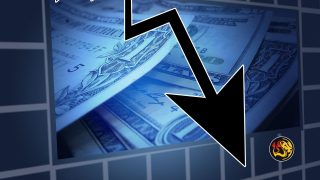Estimate: U.S. GDP fell almost 33 percent in 2nd quarter
By Dan McCaleb | The Center Square

(Worthy News) – U.S. Gross Domestic Product dropped an estimated 32.9 percent in the second quarter of 2020, according to a report from the Bureau of Economic Analysis released Thursday, a result of stay-at-home orders that shuttered businesses in response to COVID-19.
The second-quarter decline – reported on an annualized basis, meaning it’s an estimate of growth or decline if conditions were to persist for 12 months – is the worst since at least World War II. The U.S. began measuring the data in 1947.
“The GDP report indicated that the economy contracted by 9.5 percent from the first quarter to the second, or nearly one-third on an annualized basis,” Michael Lucci, president and publisher of 50Economy, told The Center Square. “The annualized number can be misleading because it projects the economy if the quarterly drop was sustained for a year, which we know is not the case. However, this is the worst quarterly drop in more than 70 years of data, and brought U.S. GDP back to 2015 levels due to this drop.”
Gross Domestic Product is the total market value of goods and services produced over a specific time period. It is viewed as a measure of a country’s economic health.
The bureau, a division of the U.S. Department of Commerce, said its latest report is an estimate based on incomplete data. A second estimate, based on more complete data, is scheduled to be released Aug. 27.
“This recession was caused by a global pandemic, and so a health care solution is needed for a full recovery,” Lucci said. “However, new investment is also needed to strongly pull out of this downturn and to restore job and wage growth”
Lucci noted that non-residential fixed investment, which is business spending on equipment, structures and intellectual property, fell by 27 percent (annualized) for the quarter.
“Congress should fix the tax code so as not to punish these new investments,” he said. “The tax code should allow businesses to realize the full cost of their new investments in American growth instead of making them amortize those costs over years or decades.”
Permanently providing full expensing for new investments in machinery and equipment by making full expensing a permanent feature of the federal tax code can accomplish that, Lucci added.
“Furthermore, full expensing for machinery and equipment should be extended to business investment in structures and research and development,” he said. “This will not only help us recover from this downturn, but it will also make the U.S. more competitive globally and provide an incentive for restoring supply chains to the U.S.”
U.S. GDP shrank 5.0 percent in the first quarter of the year, measuring January through March, when the first restrictions on individuals and businesses were put in place. Two consecutive quarters of GDP decline generally signals a recession.
The first quarter drop was the first negative GDP since the first quarter of 2014 showed a 1.4 percent decline and the largest drop since the fourth quarter of 2008, when it fell 8.4 percent during the Great Recession.
Before government restrictions were put in place to slow the spread of COVID-19, GDP increased every quarter from the second quarter of 2009 through the fourth quarter of 2019, at an annual rate of 2.3 percent, according to the report. That’s the longest expansion in U.S. history.
“The main focus now is on what’s happening in the third quarter, and whether signs seen in high-frequency indicators of a slowdown show up when we get official data for July and August,” Andrew Hunter, an economist at Capital Economics, told the Wall Street Journal.
💡 Did you know? One of the best ways you can support Worthy News is by simply leaving a comment and sharing this article.
📢 Social media algorithms push content further when there’s more engagement — so every 👍 like, 💬 comment, and 🔄 share helps more people discover the truth. 🙌
